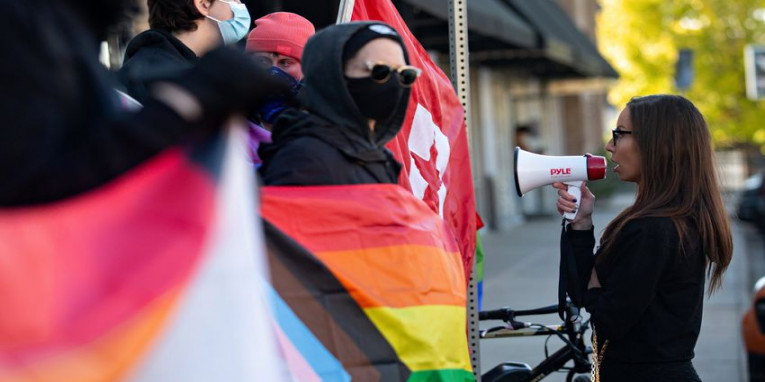Defend Our Kids Texas: A Comprehensive Guide on Child Protection
Introduction
Child protection is a crucial issue that should not be taken lightly. The safety and well-being of our kids should be our top priority. With the increasing number of child abuse cases in Texas, it is essential to take preventive measures and defend our kids. In this article, we will discuss various ways to defend our kids in Texas and ensure their safety.
What is Child Abuse?
Child abuse is any intentional action or behavior that causes harm or potential harm to a child. It can take various forms, including physical, sexual, emotional, or neglect.
Physical Abuse

Physical abuse is any behavior that causes physical harm or injury to a child, such as hitting, kicking, punching, or shaking. It can cause bruises, broken bones, or even death.
Sexual Abuse
Sexual abuse is any behavior that involves sexual activity with a child. It can include touching, fondling, penetration, or exposing a child to sexual content. Sexual abuse can cause physical and emotional harm to a child and affect their development and relationships.
Emotional Abuse
Emotional abuse is any behavior that causes emotional harm to a child, such as constant criticism, humiliation, or rejection. It can cause low self-esteem, anxiety, depression, and other emotional problems.
Neglect
Neglect is any behavior that deprives a child of basic needs, such as food, shelter, clothing, medical care, or supervision. It can lead to malnutrition, illness, injury, or even death.
Signs of Child Abuse
Child abuse can be difficult to detect, but there are some signs that you can look for. Some common signs of child abuse include:
Unexplained injuries or bruises
Sexual behavior or knowledge beyond their age
Frequent absences from school
Poor hygiene or malnourishment
Changes in behavior, such as aggression, withdrawal, or fear
How to Identify Abusive Behavior
Identifying abusive behavior can be challenging, but there are some common signs that you can look for. Abusive behavior can include:
Controlling behavior, such as isolating a child or restricting their activities
Using physical force or threats to discipline a child
Using coercion or manipulation to get what they want
Blaming or shaming a child for their behavior
How to Prevent Child Abuse
Preventing child abuse requires a collective effort from parents, caregivers, and the community. Here are some ways to prevent child abuse:
Educate Yourself
Educate yourself about child abuse and its effects. Learn how to recognize the signs of abuse and how to report it.
Build Strong Relationships
Building strong relationships with your children and other adults can help prevent abuse. It creates a supportive environment where children feel safe and valued.
Encourage Open Communication
Encouraging open communication with your children can help them feel comfortable discussing any concerns or problems they may have. It also helps to establish trust and mutual respect.
Teach Healthy Boundaries
Teach your children about healthy boundaries and respect for themselves and others. It can help them recognize and avoid abusive behavior.
Know Your Child’s Friends and Activities
Knowing your child’s friends and activities can help you identify any potential problems or risks. You can also monitor their online activities and social media use.
Report Suspected Abuse
Reporting suspected abuse is crucial to protecting children and preventing further harm. You can report abuse to Child Protective Services (CPS) or the police.
Defend Our Kids Texas: Laws and Regulations
Texas has several laws and regulations in place to protect children from abuse and neglect. Here are some of the key laws and regulations:
Texas Family Code
The Texas Family Code outlines the legal requirements for child abuse reporting, investigation, and prevention.
Texas Penal Code
The Texas Penal Code defines various criminal offenses related to child abuse and neglect, such as assault, sexual abuse, and endangerment.
Texas Education Code
The Texas Education Code requires schools to report suspected abuse or neglect of a child to CPS or law enforcement.
Texas Administrative Code
The Texas Administrative Code outlines the minimum standards for child care and foster care facilities in Texas.
Defend Our Kids Texas: Resources
There are several organizations in Texas that provide resources and support for child protection and abuse prevention. Here are some of the key resources:
The Texas Department of Family and Protective Services
The Texas Department of Family and Protective Services (DFPS) is responsible for investigating and preventing child abuse and neglect in Texas. They provide a hotline for reporting suspected abuse and offer resources for families and children.
Children’s Advocacy Centers of Texas
The Children’s Advocacy Centers of Texas (CACTX) is a network of nonprofit organizations that provide services to child abuse victims and their families. They offer counseling, medical exams, and other support services.
Texas Council on Child Abuse and Neglect
The Texas Council on Child Abuse and Neglect (TCCAN) is a nonprofit organization that works to prevent child abuse and neglect in Texas. They provide education and training for professionals and community members and advocate for policy change.
Defend Our Kids Texas: FAQs
Q1: What should I do if I suspect that a child is being abused in Texas?
A: If you suspect that a child is being abused in Texas, you should report it immediately to CPS or law enforcement. You can also contact a local advocacy center for support and resources.
Q2: Can I report suspected child abuse anonymously in Texas?
A: Yes, you can report suspected child abuse anonymously in Texas. However, providing your name and contact information can help with the investigation and follow-up.
Q3: What happens after I report suspected child abuse in Texas?
A: After you report suspected child abuse in Texas, CPS will conduct an investigation to determine if there is evidence of abuse or neglect. They may also provide services to the child and family if needed.
Q4: What are the penalties for child abuse in Texas?
A: The penalties for child abuse in Texas vary depending on the nature and severity of the offense. They can range from fines to imprisonment and can include probation and counseling.
Q5: How can I get involved in preventing child abuse in Texas?
A: There are several ways to get involved in preventing child abuse in Texas, such as volunteering at a local advocacy center, donating to a child abuse prevention organization, or advocating for policy change.
Q6: What are some common myths about child abuse in Texas?
A: Some common myths about child abuse in Texas include:
Children are safe from abuse in their own homes.
Child abuse only happens to certain types of children.
Child abuse is always obvious.
Conclusion
Defending our kids in Texas requires a collective effort, but it is worth it to ensure their safety and well-being. By educating ourselves about child abuse, building strong relationships, and reporting suspected abuse, we can make a difference in children’s lives. Remember, every child deserves to be safe and protected.
